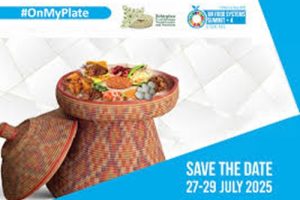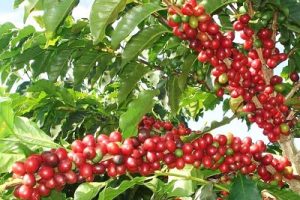
BY ABEBE WOLDEGIORGIS
Though blessed with the largest cattle population in Africa, Ethiopia is not advantageous in terms of gaining corresponding benefit from the resource due to limited capacity in terms of technology, finance, farming techniques and sufficient well trained human resource along with substandard provision of medical service. Thus, the sector’s contribution to the economy is insignificant.
Not only these, the livestock in the low land areas of the country is highly vulnerable to natural calamities. To illustrate, when extreme weather conditions occur, the animals meet their death in the wilderness which in turn incurs heavy cost on the livelihood of the pastoral community.
Cognizant of these, to upgrade the status of and to modernize the sector, the Ethiopian Cooperative Associations Commission and the Ethiopian Development Bank agreed to work together and signed memorandum of understanding last week.
On the occasion, the Ethiopian Cooperative Associations Commission Commissioner, Frealem Shibabaw said that, the objectives of reaching the agreement to work with the Ethiopian Development Bank is that to organize animal scientists specialized in the sector to raise productivity of milk and meat and forage and to lead the sector professionally.
To this end, a pilot project will be crafted and members of the cooperative associations engaged in livestock production that enhances their income by supplying their products to the urban residents, to government institutions such as hospitals, students feeding centers and in such a way, they will play their part in the economic growth.
The two institutions’ agreement also plays pivotal role to raise productivity of the sector in poultry, goats, sheep, eggs and milk. The project also aims to create job opportunities to the unemployed youth in urban and semi urban centers.
As to Frealem, the Ethiopian Cooperative Association organizes Agencies in collaboration with the Regional Cooperative Associations in order to strengthen and improve their working system. In addition, it provides technical support to raise productivity of the associations and helps them to be competent in the local and international markets. Similarly, it arranges legal frame works for their own self- governance.
President of the Ethiopian Development Bank, Yohaness Ayalew on his part said that, his bank will provide financial services by facilitating short, medium and long term loan programs. It also provides lease finance and trainings in relation to the project activities.
He further said that, the project idea is implementable. The nation has abundant natural resource but due to various reasons, it is not properly exploited it yet. As a result, the population is forced to survive in the hand to mouth living condition. Therefore, supplying the improved livestock products is essential not only to the local farmers but also to the neighboring countries via enhancing all stakeholders’ concerted efforts. In these regard, the bank has been supporting the livestock sector for long but the outcome is negligible. The poultry sector in particular, is failed.
As to Yohaness, to enhance the sector’s productivity, there should be benchmark so that, the achievement could easily be evaluated and preparing for further achievement will be possible. In line with enhancing productivity of the sector, there should be viable market which can absorb the products because production needs market. With the absence of sufficient and standardized market, meeting objective the project will be unrealistic.
The sector has a potential to substitute import which in turn enables the nation to save the hard currency allocated for the importation of the livestock products. In this regard, the Ethiopian Development Bank in collaboration with the Ethiopian Cooperative Associations Commission will provide training to members of the association and orientation also will be provided before the projects are operational.
Revisiting the objectives, effectiveness and profitability of the projects also is vital. The bank provides necessary support to the efficient and profitable cooperatives and encourages professionalism.
As to Yohaness, the failure of poultry farm attributes to none availability of sufficient forage. Hence, engaging in producing forage rigorously is essential. Supplying improved variety of chicken specious to poultry farmers will be part of the project because the local chickens have poor quality in their reproductive rate.
Commissioner’s Advisor of the Ethiopian Cooperative Association Commission, Shimekit Maru on his part said that according to studies, despite the livestock sector contributes 15 to 17 percent of the nation’s Gross Domestic Product (GDP), the nation did not effectively exploited the sector. In Ethiopia, annual per capita consumption of egg product is 7 which is the lowest in Africa. Contrary to this, the Kenyan egg per capita consumption is 44. Chicken meat per capita consumption in Ethiopia is 0.8 kilogram while per capita average consumption in Africa is less than 6.73 kilogram. The milk per capita consumption is 70 litters while the World Health Organization recommends that it has to be 200 litters.
This all indicates that in Ethiopia, there is huge shortage of supply of milk, chicken meet and egg to the market. Therefore, to bridge the gap, the Ministry of Agriculture crafted 10 years perspective strategic plan which is being implemented.
As to Shimekit, in the initial phase of the project, 90 animals’ scientists’ cooperative associations will be organized at the national level. The cooperatives comprised 10 regions and two city administrations. Since all the neighboring countries are suffering from food deficit, the livestock sector will have a potential to tap these countries’ markets but if it is well developed.
In Ethiopia, cooperative unions rely on small holder farmers for the success of their business transaction and the project creates more market to their products and in the meantime, it benefits various stakeholders working in the value chain. In addition, it creates job opportunities to thousands in the vicinity of urban center.
The project will be operational in the surrounding areas of urban centers by targeting the urban consumers and in the areas where reliable demand infrastructure is available.
The logistics works will be carried out by both the public and private sector. The Ethiopian Development Bank provides loan in a very low interest rate through various programs and as compared to the commercial bank of Ethiopia, it is feasible. But if the borrowing cooperatives fail to refund the money, the project will be cancelled. Hence, they should think of finding inputs used for production and market to obtain more profit.
In the first round of the implementation of the project for poultry, each cooperative has 15 thousand chickens, one thousand goats and sheep each and 500 cattle. In Addis Ababa and its outskirt six cooperatives will be established. Likewise, in Oromia 22, in Amhara 19, in Southern Nations Nationalities and peoples14, in Somali, Gambela and Benishangul Gumuz each 3 cooperatives, in Harari region and Dire Dawa city administration each 4 cooperatives will be established.
As it is mentioned above, Ethiopia has the largest number of cattle in Africa but paradoxically it suffers from deficit of animals and crop products. To meet the gap, it allocates its meager hard currency annually for purchasing of food products. Therefore, the nation can benefit from this sector not only from meat and milk but also from hide and skin.
Since recently, the government has been aggressively working to transform the economic land scape from agricultural led to that of industry led one. In this regard the manufacturing sector particularly, the agro industry is expected to play pivotal role. The livestock sector can serve as a supplier of raw materials to the agro industry particularly, to the leather and shoe factories.
The industries play remarkable role in creating jobs to hundreds of thousands, create linkage between farming and industry sectors, attract local and foreign investors, meet local leather products demand, boost export and shore up currency shortages and broaden space for the private sector in the economy. Therefore, the collaboration between the Ethiopian Cooperative Associations commission and the Ethiopian Development Bank to scale up the livestock production is timely and helps to transform the sector from the traditional system to that of the modern one.
THE ETHIOPIAN HERALD FRIDAY 14 OCTOBER R 2022





